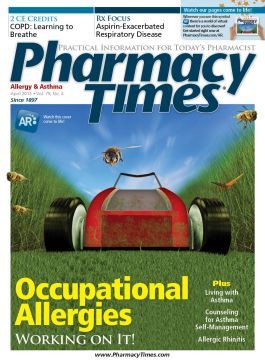Patient Care Services Make Sense
With an impending primary care provider shortage, pharmacists can pick up the slack.
With an impending primary care provider shortage, pharmacists can pick up the slack.
You’ve heard it often said that Americans spend more for their health care than citizens of any other country, yet they have less to show for it. As we live longer, this will only get worse unless changes are made. The difficult question is, what are the right changes to make?
With the Affordable Care Act (ACA) will come more individuals seeking care. We already have a shortage of primary care providers and it is expected to get worse by 2020. In my own state, one of the reasons given for not expanding the Medicaid program under ACA is that we already have a shortage of doctors willing to see Medicaid patients—and expansion of coverage will only make this problem worse. Does this situation create an opportunity for the pharmacist to assume a role of providing patient care services to help address this impending shortage of primary care providers?
Some of you might say that we are already doing that but in most settings we are not getting paid for it because we cannot bill as a provider. In most situations, other health care team members do not think of the pharmacist as being engaged in primary care roles but more in medication management, adherence monitoring, or patient education roles. Should we change that image or not?
More than 25 years ago, I started a program where select pharmacy students were admitted into a Physician Assistant (PA) program and upon completion earned both a BS in pharmacy and a PA degree. Most got licensed both as a PA and a pharmacist. We thought that this unique training would open different doors for the graduates and, in a few cases, it did. But in the end, most either practiced as a pharmacist or as a PA. In either setting, they probably did a better job because they had both sets of skills. But they did not practice a different role. Perhaps we were ahead of our time.
Such a program today might result in much greater opportunities for the graduate. With the expansion of retail clinics in community pharmacies such an individual could function well in both settings. I would suggest that he or she would be a better provider of primary care than the others who function in this role. I make this assertion because drugs represent the primary treatment modality in this setting.
Now comes the critical question: Do today’s PharmD graduates, maybe with a PGY 1 residency, have all the needed skills to function in this enhanced role? I think they do, although there may be a course or two that might help make them better. Since we have a growing oversupply of pharmacists, using them in this new role would be ideal. Besides, some pharmacy schools already have a PA program on the campus so it would easy to add these few courses into the pharmacy curriculum or offer them through continuing education. If we have a growing shortage of primary care providers and a growing oversupply of pharmacists—and recent graduates have the skills or could easily get the skills—doesn’t it just make sense to promote this role for pharmacists? I am beginning to think it does.
If we were to promote the pharmacist patient care roles to help address primary care shortages should this be open to all pharmacists or just select pharmacists? I think it should be limited to select pharmacists. How would we determine who would be eligible to function in this role? I think the way this might be done would be through board certification.
What would we call this person? Since they are licensed as pharmacists, they would still be pharmacists. But should we use an adjective to help differentiate them? How about “pharmacist practitioner” or “clinical pharmacist practitioner”? Of course, if we are successful in getting recognition under Medicare legislation that pharmacists are practitioners, we would then need a different term. All this may be of little value unless payers are willing to compensate pharmacists for these new roles.
The American Pharmacists Association has announced that it is committing $1.5 million toward a major campaign to get pharmacists recognized as health care providers. The association recognizes that this will require a multiorganizational, multimillion dollar, multifaceted, long-range effort that will take all of us getting involved to make it happen. It sure is an exciting time to be a pharmacist!
Mr. Eckel is a professor emeritus at the Eshelman School of Pharmacy, University of North Carolina at Chapel Hill. He is past executive director of the North Carolina Association of Pharmacists.

